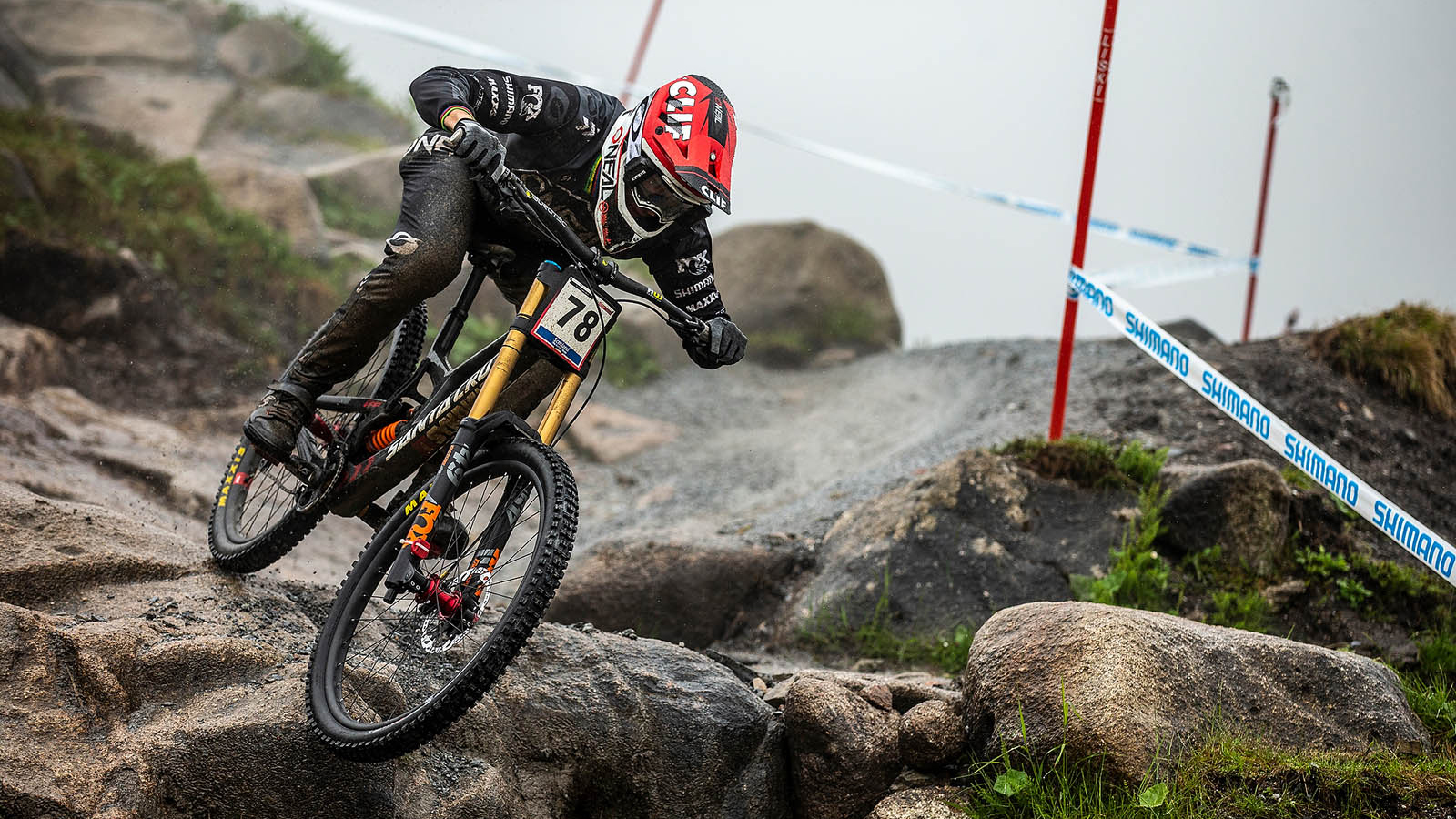


If you are new to mountain biking and are curious to know about “How To Get Better At Downhill Mountain Biking” you are in the right place. We will provide you with all the necessary tips and techniques that will help you to get better at downhill mountain biking.
To improve at downhill mountain biking, focus on developing key skills like body positioning, braking control, and line selection. Practice regularly on diverse terrains, gradually increasing difficulty.
Whether you’re new or have some experience, this quick guide has easy tips to make you better at downhill biking.
Position Your Body Right
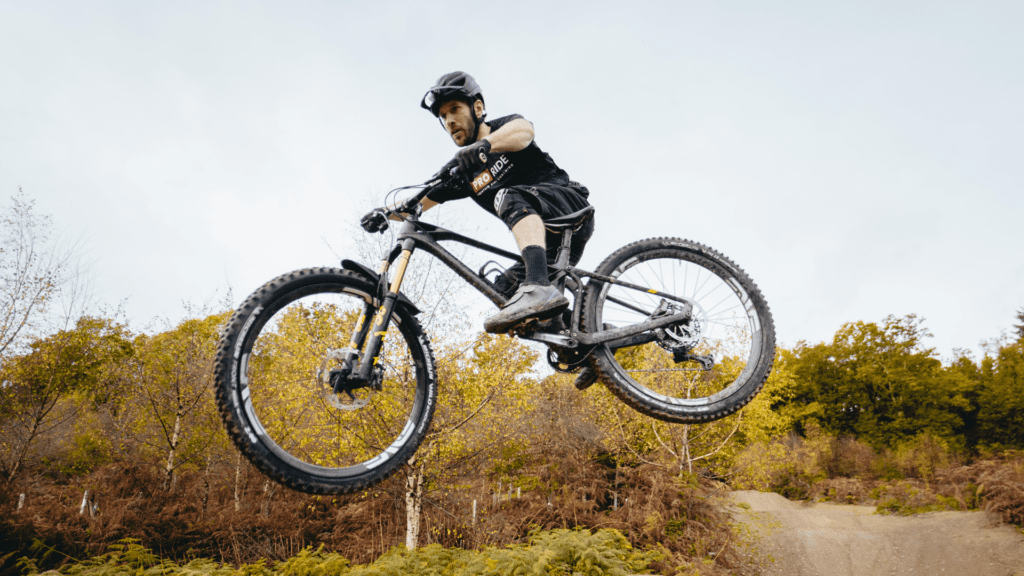


Mastering the art of downhill mountain biking begins with understanding the importance of proper body positioning. Your body is like the compass that guides your bike down the trail. Here’s a simple breakdown to help you get it right:
Stay Centered:
Keep your weight centered over the bike. Imagine a line from your head to your feet – try to balance it. Remember, proper weight distribution and body positioning play a key role in getting better at downhill mountain biking.
Bend Your Knees and Elbows:
Think of your legs and arms as shock absorbers. Keep them slightly bent to soak up bumps and uneven terrain.
Look Ahead:
Look where you want to go, not just right in front of your wheel. This helps you anticipate turns and obstacles.
Drop Your Heels:
Lower your heels towards the ground. This stabilizes your ride and gives you better control.
Relax Your Grip:
Hold the handlebars firmly but avoid a death grip. Relaxing your hands and arms helps absorb shocks and keeps you agile.
Remember, practicing these basics regularly will make them second nature. The more comfortable you become with proper body positioning, the smoother and more confident your downhill rides will be.
Read More : ” How To Become A Better Mountain Biker? “
Control Your Speed with Brakes
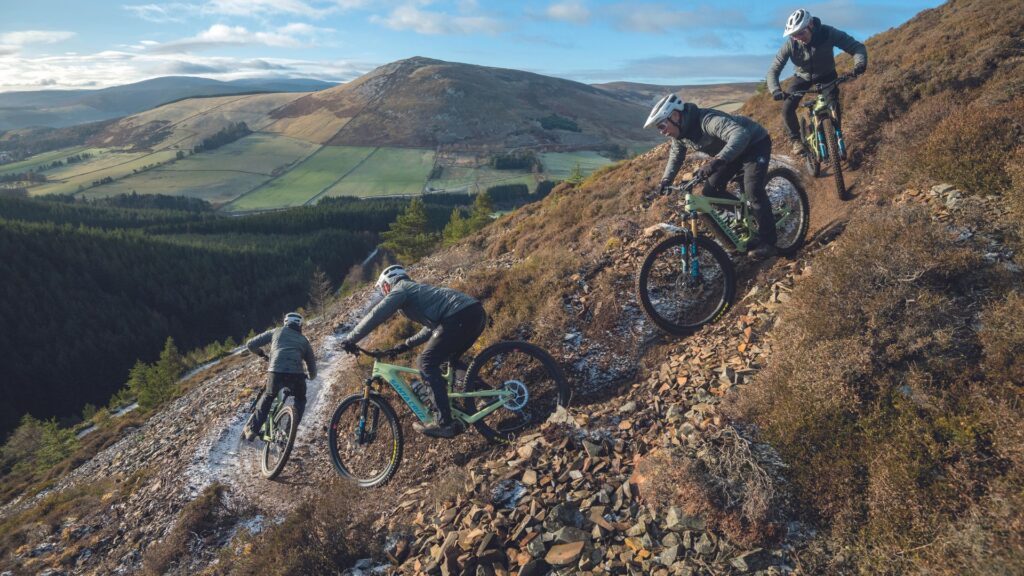


Downhill biking is super fun, but it’s important to learn how to control your speed for safety and to have a great time. Let’s break down the basics of using your brakes effectively:
Use Both Brakes:
Most bikes have two brakes – one for the front wheel and one for the back. Use both the rear brake and front brake simultaneously to slow down smoothly.
Finger Placement:
Position your fingers on the brake levers. Your index finger and middle finger are usually enough. Find a grip that feels secure and allows easy modulation.
Feather the Brakes:
Instead of slamming them on, gently squeeze the brakes. This prevents skidding and gives you better control.
Shift Your Weight Back:
When braking, shift your body weight slightly back. This helps prevent you from going over the handlebars.
Practice in a Controlled Area:
Start in an open space with a slight slope. Practice applying your brakes at different speeds until you get comfortable.
Anticipate and Plan:
Look ahead and anticipate when you might need to slow down. Plan your braking accordingly to avoid sudden stops.
Check Your Brakes Regularly:
Ensure your brakes are in good condition. Squeaky or unresponsive brakes need attention.
Remember, it’s all about finding the right balance. Practice and experience will help you get the hang of controlling your speed, making your downhill rides exciting and safe.
Read More : ” Why Is Mountain Biking So Popular? “
Pick the Best Riding Path



Choosing the right riding path is like finding the perfect dance partner for your downhill mountain biking adventure. Here’s a straightforward guide to help you pick the best route:
Read the Trail Ahead:
Look at the path in front of you. Identify obstacles, turns, and the overall terrain. This helps you plan your approach.
Follow the Natural Flow:
Trails often have a natural flow. Go with it, and let the contours guide your journey. Avoid fighting against the trail.
Avoid Straight Descents:
Straight downhill paths can lead to high speeds, making control challenging. Opt for trails with twists and turns to maintain control.
Consider Your Skill Level:
Choose trails that match your skill level. Starting with easier trails allows you to build confidence and progress gradually.
Explore Different Lines:
On more technical trails, explore different lines or paths. Sometimes, the less obvious route might be smoother or more enjoyable.
Stay Flexible:
Be ready to adapt. Trails can change, and unexpected obstacles may appear. Stay flexible in your approach and adjust as needed.
Keep an eye on the trail and adjust your riding to its natural features. This way, you’ll have a better downhill experience, making each ride fun and full of adventure.
Read More : ” Can You Ride A Mountain Bike On The Beach? “
Safety First: Wear Your Protective Gear
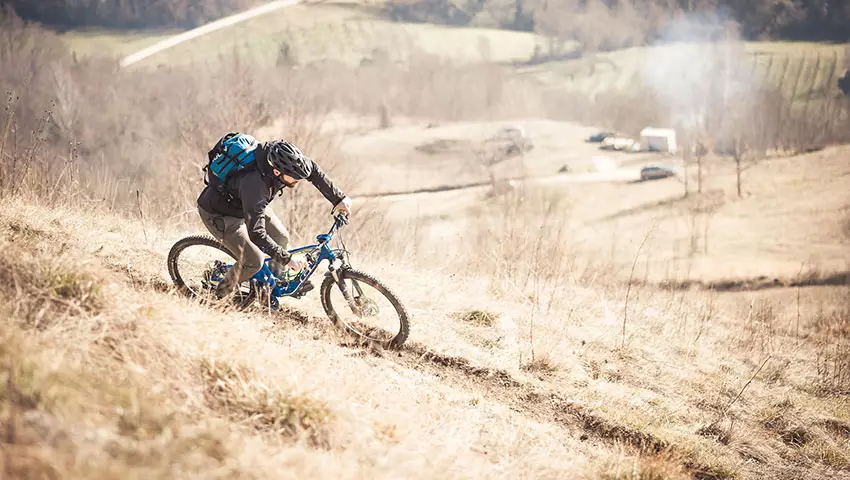


Downhill mountain biking delivers an adrenaline rush, but it’s crucial to gear up for safety. Here’s a simple guide on the importance of wearing protective gear:
Helmet First:
Your helmet is non-negotiable. It shields your head, safeguarding against potential impacts. Ensure it fits snugly and meets safety standards. Use a full face helmet for proper protection.
Gloves for Grip and Protection:
Gloves enhance your grip on the handlebars and shield your hands in case of falls or scrapes. Look for durable, well-padded options.
Body Armor:
Consider body armor for added protection. This includes chest and back protectors, elbow pads, and knee pads. They absorb impacts and reduce the risk of injuries.
Eye Protection:
Goggles or sunglasses shield your eyes from debris, branches, and the sun. Clear vision is essential for navigating downhill trails safely.
Sturdy Footwear:
Wear proper mountain biking shoes with good grip. They provide stability on pedals and protect your feet from rocks or roots on the trail.
Full-Length Clothing:
Long-sleeved shirts and pants protect your skin from scratches, sun exposure, and minor abrasions. Opt for breathable fabrics suitable for varying weather conditions.
Consider a Neck Brace:
If you’re a skilled rider or want extra safety, a neck brace can lower the chance of neck injuries in specific situations.
Don’t forget that protective gear is your insurance on the trail. Stay safe, get good gear, and have a blast downhill biking, knowing you’re ready for the adventure!
Read More : ” Can You Use A Hybrid Bike For Mountain Biking? “
Start Easy, Progress Slowly
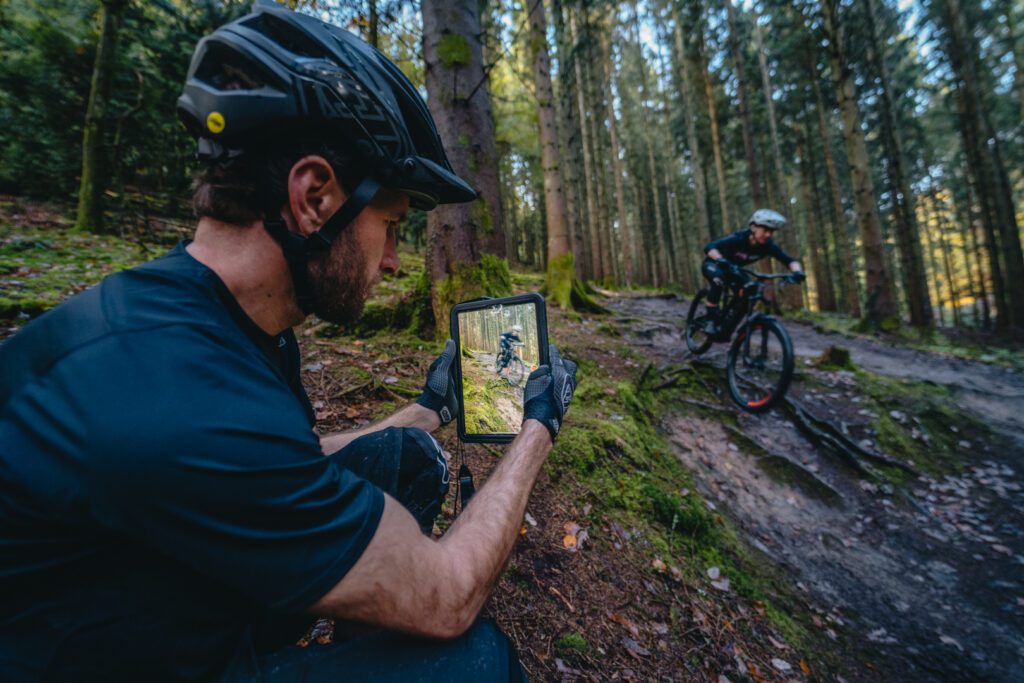


Embarking on the exciting journey of downhill mountain biking? Here’s a simple guide to help you start easy and progress gradually:
Begin with Beginner Trails:
Start on trails designed for beginners. These trails are usually less steep and have fewer technical features, allowing you to build confidence.
Focus on Fundamentals:
Master the basics first. Practice essential skills like braking, body positioning, and steering on simpler trails before tackling more challenging ones.
Gradually Increase Difficulty:
As you gain confidence and skill, gradually move on to trails with slightly more difficulty. This progressive approach helps you adapt to changing terrains.
Learn from Each Ride:
After each ride, reflect on what went well and what you found challenging. Use this feedback to improve and set realistic goals for your next ride.
Take Breaks and Rest:
Downhill biking can be physically demanding. Take breaks between rides, stay hydrated, and listen to your body. Rest is crucial for progression.
Ride with Experienced Friends:
Joining more experienced riders can provide valuable insights. Observe their techniques, ask questions, and learn from their experiences.
Remember, downhill mountain biking is a journey, not a race. Starting easy and progressing slowly ensures a more enjoyable and safe experience.
Read More : ” Can You Ride A Mountain Bike On Pavement? “
Final verdict (How To Get Better At Downhill Mountain Biking)
To sum it up, getting better at downhill mountain biking takes practice and time. Begin with the basics, like how to position your body and use brakes. Gradually try more challenging trails. Wear safety gear, ride carefully, and have fun.
Each step you take helps you become a better downhill biker. So, enjoy the ride, stay safe, and keep improving!
FAQs:
Is downhill mountain biking difficult?
Downhill trails are often very challenging, so it’s always a good idea to take an easy lap down the trail to look at all the features before heading down at full speed.
What muscles does downhill mtb work?
While the hamstrings, glutes, quadriceps, and calf muscles of the lower body propel the mountain bike forward, the pectorals, the “core,” triceps, deltoid complex, biceps, and forearms muscles all keep the body stable and on the bike during downhill descents and help absorb trail shocks.
How do I get faster at downhill?
To get faster at downhill riding, focus on improving your technique, building strength and endurance, and practicing on a variety of terrains.
What is the best MTB posture?
Small body position adjustments go a long way! Chin over stem. Lower your chest and hips to build traction and stability. Keeping your chin over your stem while descending ensures your weight stays balanced and you don’t unweight your front wheel!
What is a good mountain bike pace?
Average speed for a mountain bike ≈ 10 mph (16 kph) during single track riding. Uphill sections average ≈ 8 mph (13 kph) with downhill sections averaging ≈ 12 mph (19 kph). The average speed is ≈ 17 mph (27 kph) with peak speeds upwards of 30 mph (48 kph) during downhill mountain bike riding.



Welcome to Bikegenics, where passion meets performance! We are a leading online destination for all things related to mountain biking, dedicated to providing you with top-notch gear, expert advice, and an immersive community to fuel your two-wheeled adventures. With a commitment to excellence and a deep love for the sport, we strive to elevate your biking experience to new heights.
